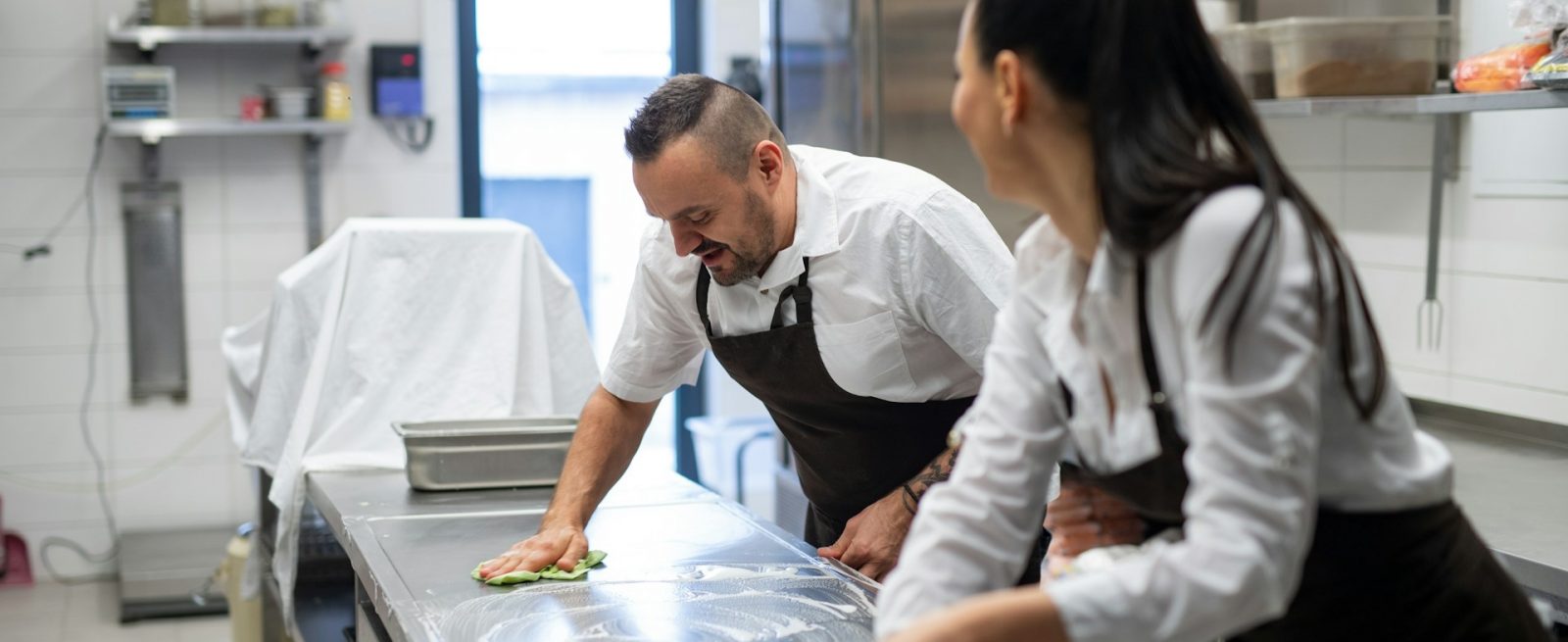Beyond the Health Inspector: Creating a Culture of Cleanliness in Multi-Location Restaurant Operations
3 Min Read By Peter Biagioli
The stakes for restaurant cleanliness have fundamentally changed. While health inspections remain important, they represent only the minimum threshold of acceptability. Today's consumers make split-second judgments about your brand based on cleanliness cues that go far beyond what any health inspector might note.
Consider the explosive growth of TikTok restaurant reviews where influencers document dining experiences in real-time. A single video showing a dirty bathroom or unsanitary conditions can rack up millions of views within hours. These digital moments reflect a profound truth: a single negative cleanliness experience can severely undermine customer trust and impact perception of your entire brand for years.
The business consequences are severe. Industry surveys consistently show that cleanliness ranks among the top factors influencing diners' decisions to return, with a majority of consumers reporting they would never revisit an establishment after encountering cleanliness issues. High-profile foodborne illness outbreaks demonstrate how cleanliness failures can haunt restaurant brands for years, eroding customer loyalty and revenue that took decades to build.
What Separates "Excellent" from "Acceptable" Cleanliness
Excellence in restaurant cleanliness isn't simply about meeting health department standards—it's about creating an environment where cleanliness becomes part of your brand identity across all locations.
The distinction is multifaceted. Consistency builds trust in your brand promise—the bathroom in your downtown location should be just as pristine as the one in your suburban outlet. Research shows customers subconsciously register specific cleanliness indicators like bathroom condition, grout discoloration, fingerprints on glass, and high-touch point sanitization. Perhaps most importantly, excellent cleanliness programs anticipate problems before they occur rather than responding to complaints or inspection failures.
Building a Culture of Cleanliness
Creating consistent cleanliness excellence across multiple locations requires embedding these practices into your company culture. This goes beyond adding tasks to a checklist—it means transforming how your organization thinks about cleanliness.
The areas that most significantly impact customer perception deserve special attention. Clean bathrooms communicate volumes about your overall operation. Similarly, high-visibility kitchen areas serve as proxies for areas customers cannot see, while entry points and waiting areas set expectations for the entire experience.
Standardization with clear accountability mechanisms ensures consistency. Rather than abandoning heightened cleanliness protocols developed during the pandemic, forward-thinking restaurant groups are standardizing them as operational requirements. Regular sanitization of high-touch surfaces, enhanced ventilation practices, and visible cleaning cues have all become standard for industry leaders.
Key Takeaways for Restaurant Leaders
To create cleanliness excellence across your locations:
- Implement a tiered cleaning program that distinguishes between daily maintenance (touch-point sanitization, restroom checks), weekly deep cleaning (grout scrubbing, behind-equipment cleaning), and quarterly program cleaning (HVAC systems, grease traps, behind walls)
- Focus on psychological cleanliness cues that customers notice most—especially bathrooms, visible kitchen areas, and entry points
- Create visual cleaning standards with photographic examples so every team member understands exactly what "clean" means in your organization
- Develop location-specific cleaning calendars that account for traffic patterns and seasonal variations
- Build cleanliness metrics into management evaluations to ensure accountability at every level of your organization
- Consider specialized cleaning partnerships rather than adding responsibilities to customer-facing staff who should focus on delivering exceptional service
As we move through 2025, the restaurant industry stands at a cleanliness crossroads. Many operators have gradually relaxed the heightened protocols that became standard during the pandemic, yet consumer expectations around cleanliness have permanently shifted. This gap between expectations and execution creates both risk and opportunity.
The stakes are particularly high for multi-location operations, where inconsistency can damage brand perception across your entire footprint. A single negative experience—whether it's a visibly soiled restroom or an employee neglecting proper handwashing—can alter how customers view your brand. In the age of social media, these impressions spread faster and wider than ever before.
The most successful restaurant operators understand that cleanliness excellence isn't about avoiding problems—it's about creating an environment where customers feel valued and eager to return. The brands that recognize cleanliness as an essential element of their customer experience—not merely a compliance obligation—will build stronger loyalty, enhance their reputation, and deliver superior financial results.

